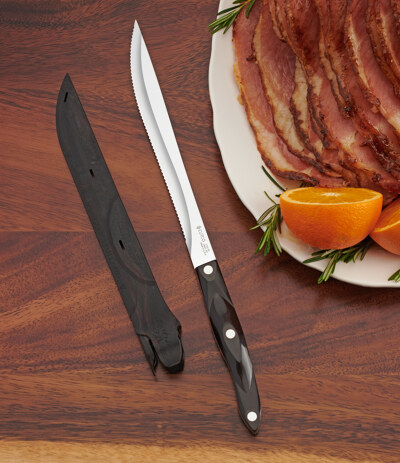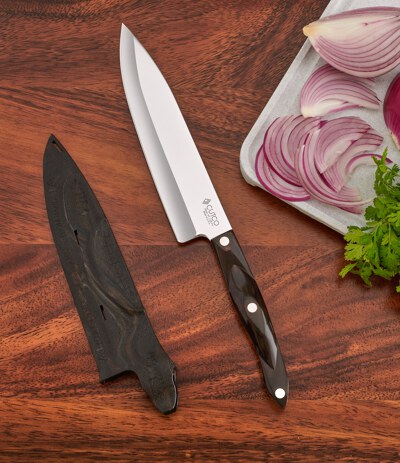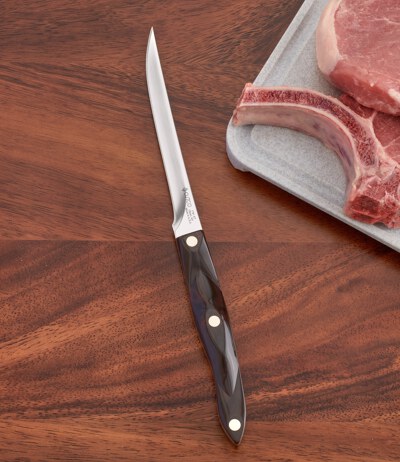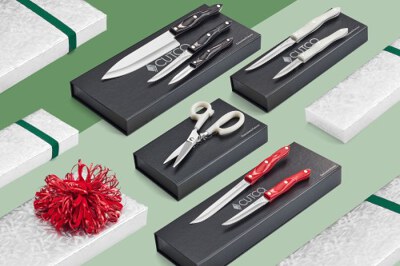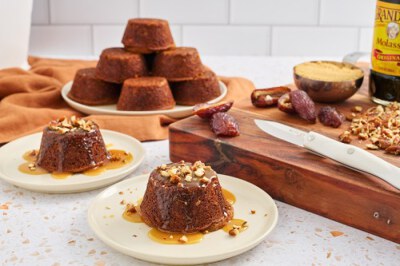Crown Roast of Pork With Apples and Apricot Stuffing
1756 days ago
Skip to recipe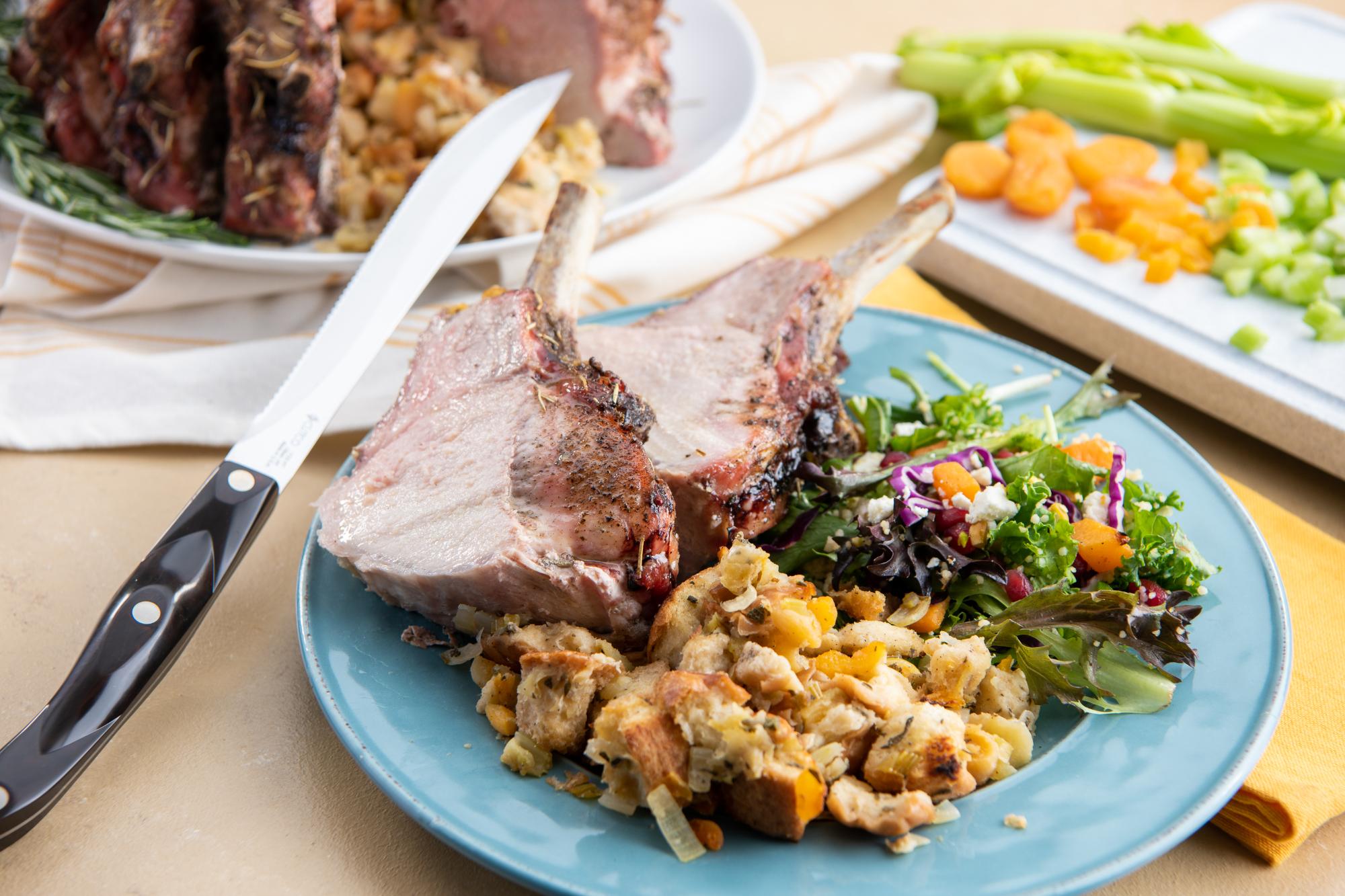
I sometimes wonder where I get my crazy ideas, including this one. For some reason, I have wanted to tackle a crown roast for the last three years that I’ve been at Cutco. I’ve never attempted to make one before, but looking at photos, it was just so impressive. And I’m not talking about the foil crowns some folks put over the bones, just the overall presentation of a crown roast filled to the rim with some kind of stuffing.
So here we are, and I’m apparently fulfilling one of my bucket-list items. I will admit to having a certain amount of trepidation in tackling this recipe, but I figured I’ve done turkey before, how hard can it be? Let me introduce you to our Crown Roast of Pork with Apple and Apricot Stuffing recipe and, not to spoil the surprise, but it was worth it and oh so delicious.
Let me start by saying I wanted the roast itself to be simple and not over-marinated. To achieve this simplicity, I put together a spice rub of salt, black pepper, dried sage and dried rosemary – that’s it. I then made sure to rub this all over the outside and inside of the roast and that was all we did to season the meat.
For the stuffing, I wanted to build on the sage flavor incorporated into my rub and I knew I wanted to bring in apples. In thinking about the stuffing, I wanted to move away from fall flavors (think cranberries) and instead look at spring-inspired flavors, so I thought why not some dried apricots? It would bring in a little sweetness but would work well with the sage and apples.
To prepare the stuffing, I used the 7-5/8" Petite Chef knife to chop all of the fruits and vegetables. It really is the main knife to use for this part of the recipe.
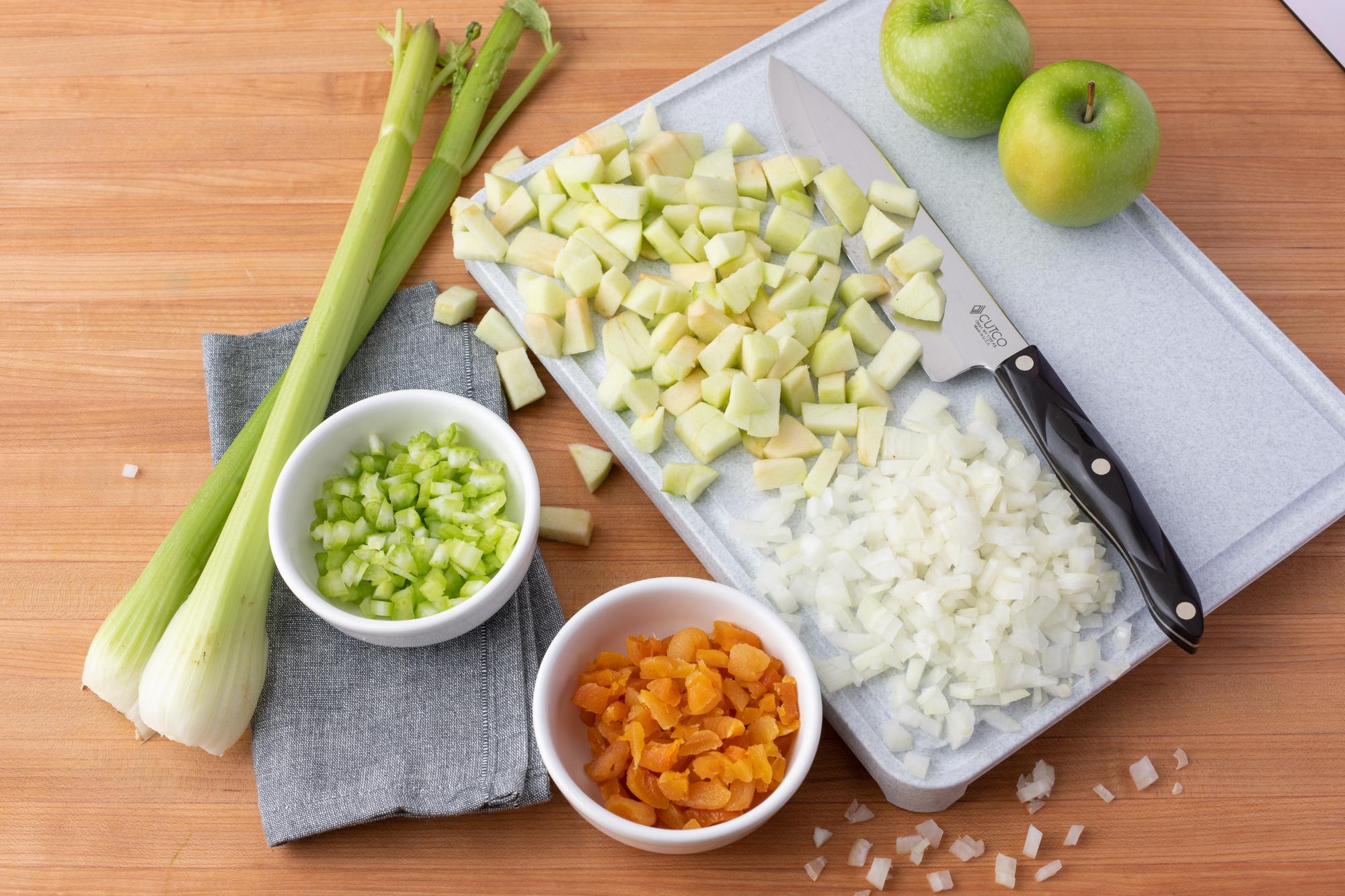
Of course, I used the 7-3/4" Petite Slicer to cut the bread into cubes, no smushing of bread happening here.
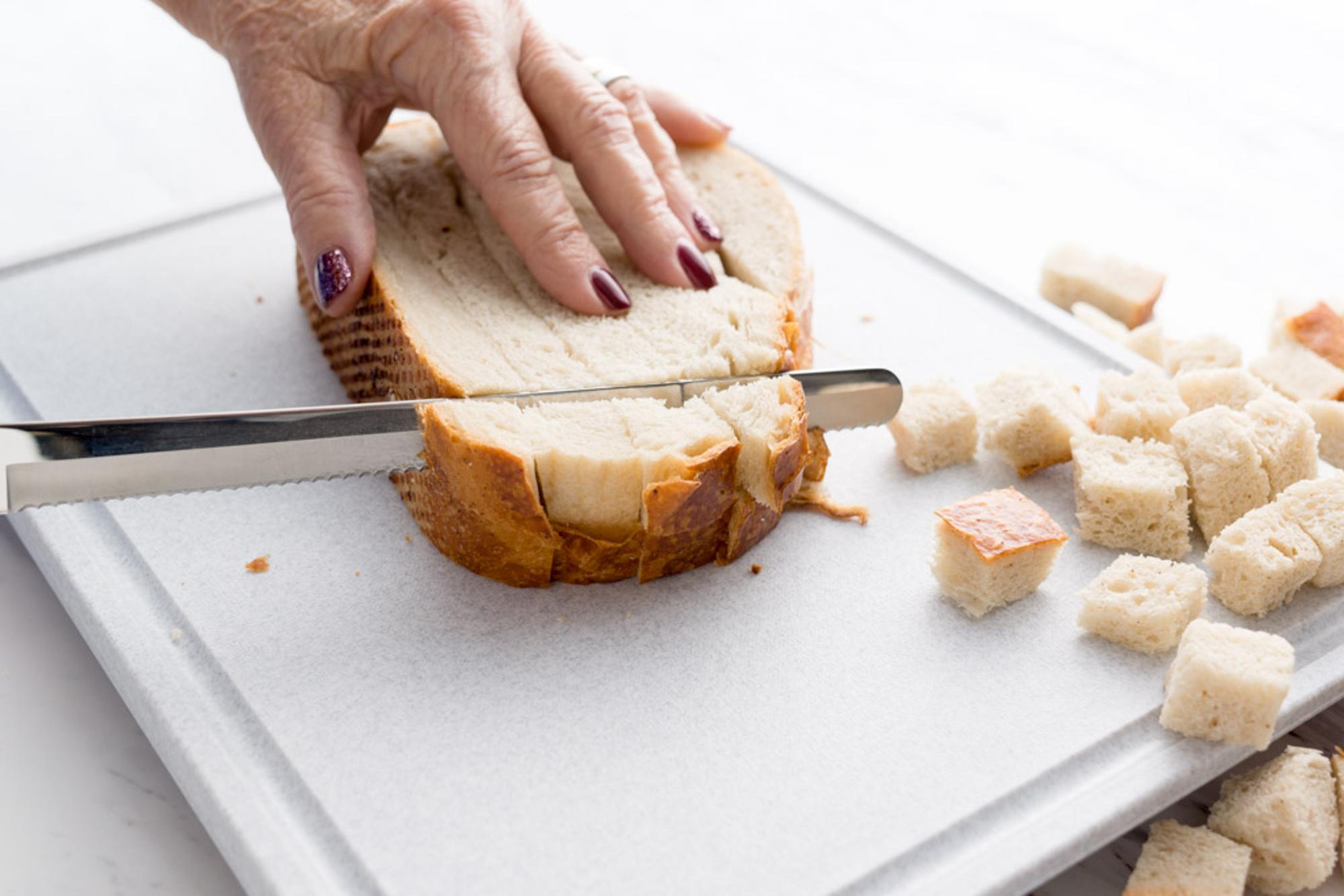
The hard part of this recipe is actually preparing the meat to become an actual crown roast. The technical term is to French a bone, which basically means to cut the meat away from the bone and this is what gives you that lovely picture of the clean bone sticking up from the meat chops. This technique is not necessarily easy, and it does take significant time. I honestly would recommend asking your local butcher to French your roast for you. It will save you quite a bit of time and aggravation.
That being said, should you wish to tackle this technique, we can give you some tips on how best to prepare the meat. Cut the first layer of meat away from bone, right above the meatiest part of the chop and then cut between the bones to remove the excess meat. The Boning Knife is perfect for this task and it also handled scraping away the meat and fat from the bone, so you have a completely clean bone above the chop. The next step is to actually cut slices in between each chop so you can bend the meat into a circle.
In our case, we had two rib roasts that formed the crown so an additional step you’ll need to take is twining the roast together to form the crown. This also helps contain the stuffing. One way to do this is to take a long piece of twine and tie it tightly around the center of the roast. Another technique is to use a beef needle. Thread the twine through the needle and sew the ends of the roast together. At the top of the bone, use the needle to go through both pieces of meat, and tie tightly and do the same thing at the bottom, tying the ends together (be careful on the bottom piece of meat as you don’t want to tear it). Use this same technique on the other ends. We found that this technique, along with twining the top of the roast kept it together in a perfect crown. A tip – make sure you foil the tips of each rib bone so they don’t burn.
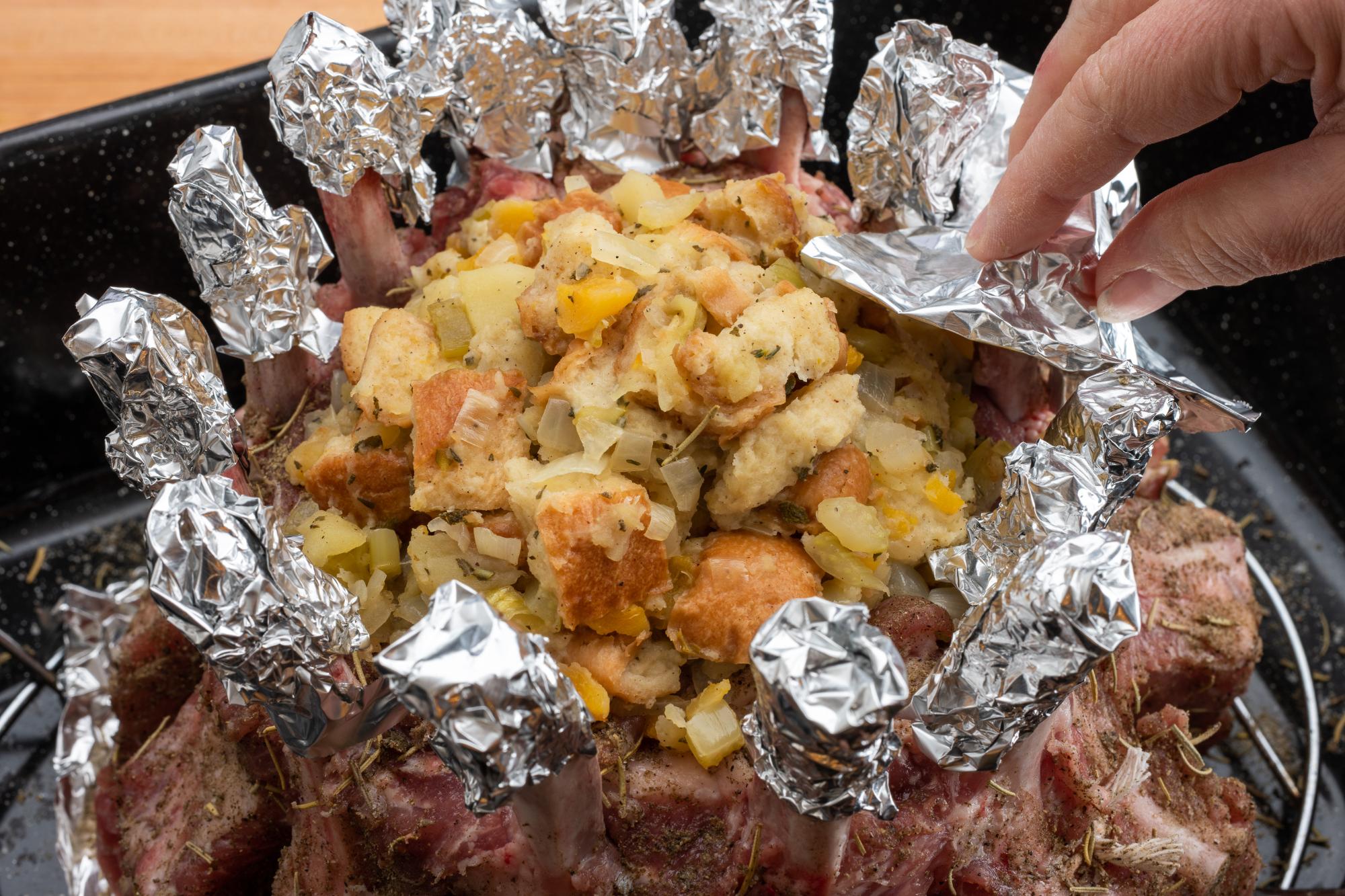
For step-by-step instructions and photos on these techniques, check out our How to Prepare a Crown Roast infographic. This will walk you through how to get your crown roast perfectly prepped for the roasting process.
Once the roast was prepped, I placed it on a rack that I had previously put foil around so the stuffing couldn’t push through and placed the rack in a roasting pan. I filled the center of the roast with the previously cooked stuffing, putting any excess stuffing in a pan to bake separately.
The crown roast was in the oven for exactly 2 1/2 hours, when it reached its desired temperature, 160 F. Taking it out of the oven, I created a foil tent to allow the cooking process to finish and the juices to settle. Using the 9" Carver, I then carved between each bone. A typical serving is one to two chops but in this case, one chop was more than enough.
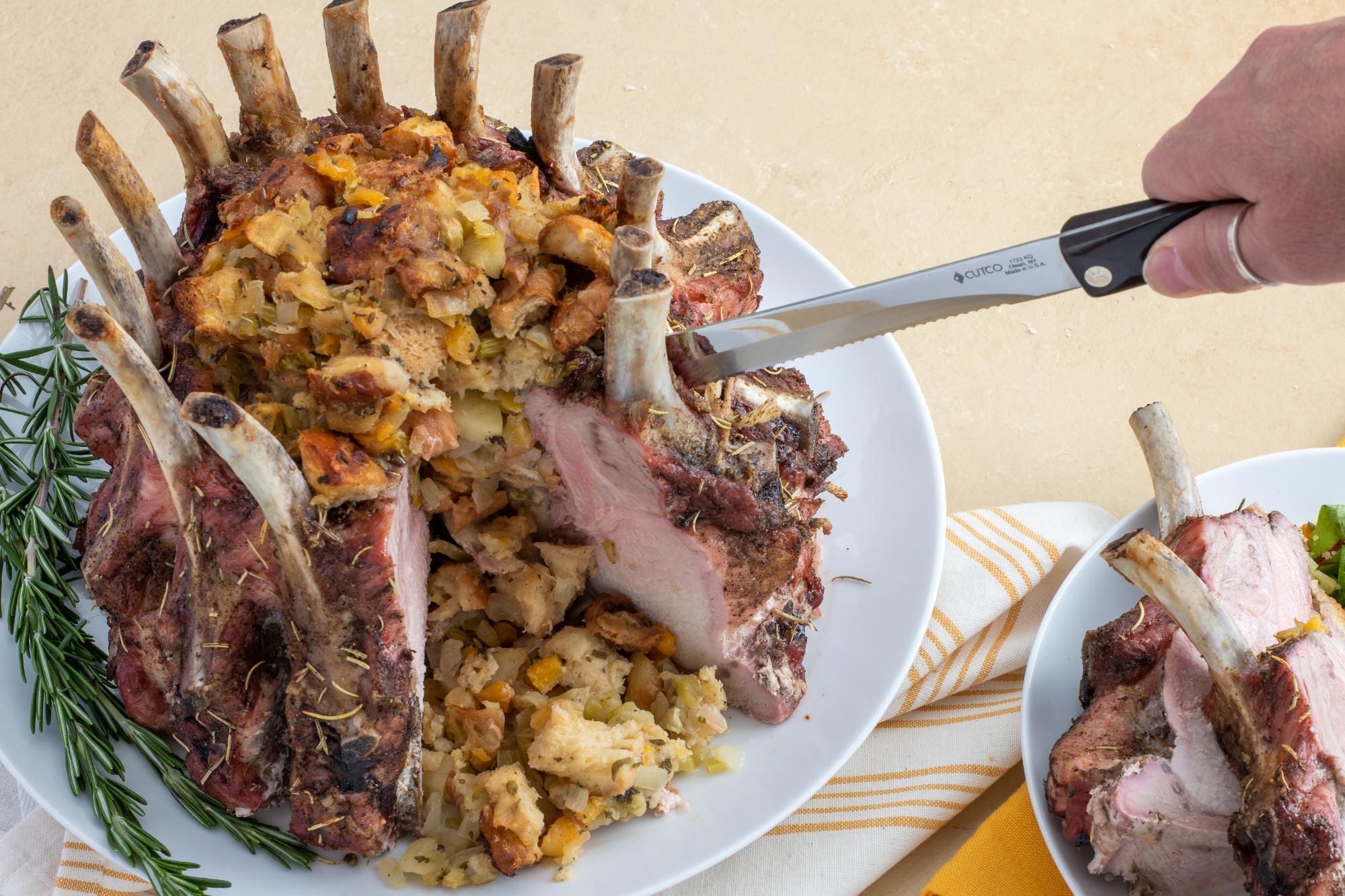
Was the crown roast worth it? I can say absolutely yes. The meat was delicious and perfectly seasoned, while the stuffing added a hint of sweetness and the same robust herb flavors found in the meat. This Crown Roast of Pork with Apple and Apricot Stuffing was definitely worth the effort and in the end, I got my picture-perfect showstopper. More important than looking good, it tasted wonderful. In the future, I think I’ll ask my butcher to French the meat but I’m glad we tackled this technique. I’ll definitely be looking to make this recipe again in the near future.
Ingredients
For the stuffing:
- 7 cups cubed day-old French bread
- 4 tablespoons unsalted butter
- 3/4 cup finely chopped onion
- 1/2 cup finely chopped celery
- 2 large tart apples such as Granny Smith, peeled, cored and chopped
- 1/2 cup chopped dried apricots
- 1 teaspoon salt
- 1/4 teaspoon black pepper
- 1 teaspoon chopped fresh sage
- 1 teaspoon chopped fresh thyme
- 1/4 teaspoon freshly grated nutmeg
- Pinch of cinnamon
- 1 cup chicken broth
For the roast:
- 3 teaspoons salt
- 1 teaspoon black pepper
- 2 teaspoons dried sage
- 2 teaspoons dried rosemary
- 1 9-pound (or 2 4.5-pound) crown roast of pork, rib ends Frenched
Directions
- Heat oven to 350 F.
- Prepare the stuffing:
- Place the bread cubes in a single layer on an ungreased baking sheet. Bake in the middle of the oven for approximately 15 minutes or until toasted. Cool bread.
- In a Dutch oven, melt the butter and cook onion and celery over medium heat until softened (approximately 4 to 5 minutes), stirring occasionally. Stir in apples, dried apricots, salt, pepper, sage, thyme, nutmeg and cinnamon. Reduce heat to low and add the chicken broth. Cook, covered and stirring occasionally, until the apples are tender, approximately 15 minutes. Stir in the toasted bread cubes.
Prepare the roast:
- In the preheated oven, place your oven rack in the lower third of the oven.
- In a small bowl, mix together the salt, black pepper, dried sage and rosemary and rub this mixture on the outside and inside of the pork.
- Holding the pork in place, encircle the roast(s) with twine to create a circle (if you have two roasts that you need to put together to form the crown, use a meat needle and tie both ends of roast together, ensuring you sew the top and bottom of each end). For additional instruction on how to prepare the crown roast, refer to this infographic.
- Wrap your oven rack in foil so the stuffing will not push through the bottom, place the prepared pork roast, bone ends up, on the rack in a shallow roasting pan.
- Fill the center of the crown with previously cooked stuffing, mounding it slightly. Place any leftover stuffing in a separate baking dish and bake for 35-45 minutes until the stuffing is crispy on top.
- Wrap the tips of the rib bones with foil to prevent burning.
- Roast pork, covering stuffing loosely with foil after 30 minutes. Continue roasting until an instant-read thermometer registers 160 F when inserted 2 inches into center of meat – taking care to not touch any bones, (total cooking time for roast will be about 2-1/2 to 3 hours).
- When pork is done, place it on a Cutting Board, cover with a tent of foil and let it stand 15 to 20 minutes. (Temperature will rise approximately 5 F and tenting allows for the juices to set up, allowing for easier carving.)
- Remove foil. Spoon stuffing into a separate bowl and slice between the ribs to serve.
- Two chops per person is a standard serving, along with a generous portion of stuffing.
